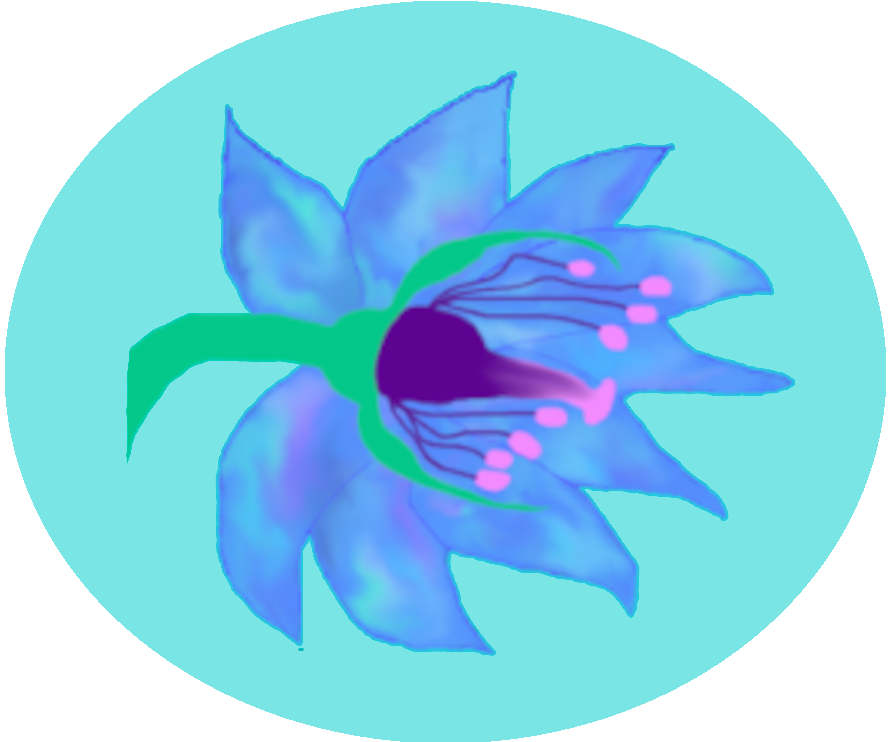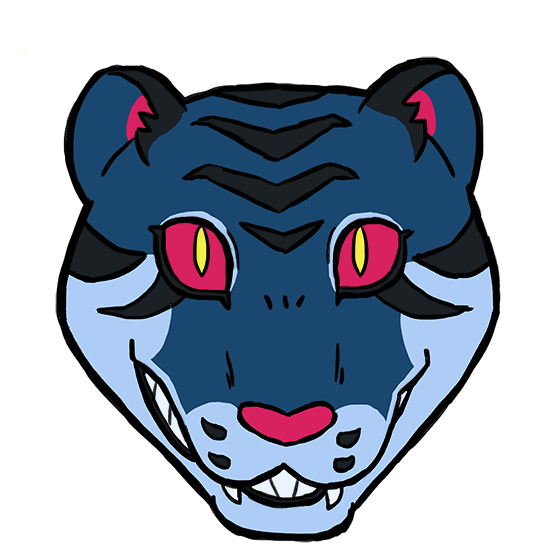Ablateocosis is the collective name for a set of parasite-transmitted and/or infectious diseases that affects any carbon-based lifeform that uses water or ammonia as their solvent. The onset and progress of symptoms are typically quick, and in the majority of the cases the outcome is fatal.
A denominator for the pathogens is that they're a required component of a
mersanida species'
plenumeiosis.
Etymology & Definition
The name was derived from the word
'ablate' which means
'to remove or dissipate by melting, vaporization, erosion, etc'.
According to pathologist Dr.
Kirione Wollmer, the choice of name come from the fact that the common symptoms of far-progressed infection was irreversible cellular breakdown, which can cause the external appearance of the infected victim "literally melting into ooze".
Cause & Transmission
Infection is mainly delivered through a vector, but the exact method of transmission varies between species.
Contact/Spores
In the skethelis order, transmission occur either through direct contact or airborne spores. Progression from infection to death is typically so fast and acute in most cases that some argue it shouldn't qualify as a disease.Plenumeiosic
In uyetsoub and species of the mercurin order, the symbiotic plenumeirons causing the disease are transmitted during an ongoing plenumeiosis.Parasitoid
Ahn kereu, lus selec, ranomaru, and samleon are all parasitoids that require a host for their eggs and/or larva. Ablateocosis progress slower in these hosts, but the prognosis is still no less dire.Susceptible Species
Only carbon-based organisms with water or ammonia as their solvent has so far proven susceptible to all types of ablateocosis infection. Species with other biochemistries tend to be ignored or only targeted if no better alternative exists, except for by the skethelis order. Many species in the dissimulex order actively avoid species with a boron-based biochemistry — even when under threat of starvation.
Hosts & Carriers
Ranic Incubator
Species of the ranomaru genus only reproduce once in their lifetime, close to the end of their life cycle, and uses their prey as incubators for their eggs and larva. The specimen chosen to become an incubator will be ambushed and disabled before being dragged off to a protected lair. The ranomaru typically dies not long after laying eggs, leaving both its own and prey's body for the larva to feed off of once hatched.Selecian Scratcher
The infection from lus selec begin as a rash-like skin condition. An irregular splotch, between 2-5cm in diameter, typically appear close to the site of the bite that quickly becomes dry, miscolored, and itchy. These rashes will spread as the disease progresses, and the infected organism will become increasingly obsessed with scratching them, usually to the point of becoming avoidant or aggressive of others.Keurunic Husk
The ahn kereuh require the support of another organism's biological system for survival. Their larva settle in the skull cavity, feeding off the brain, and eventually replaces it once having grown to a sufficiently large size. The overtaken body is commonly referred to as a keurunic husk.Samleon Shambler
An organism that was successfully infected with samleon larva will experience progressive changes in their endocrine system, meant to alter their behavior in ways that increase the parasite's chance of survival. Most end up wandering around in a stupor while the parasite slowly consume them from the inside out.Diagnosis & Treatment
It's important to identify infection as soon as possible, as certain types of has a chance of being treated before the second-stage symptoms set in and plenumeiosis has begun. Infections from skethelis, mercurin, and uyetsoub cannot be treated and the outcome is guaranteed to be fatal.
Some of the parasitic infections can be treated if the infection is discovered early. However, the available means of treatments are drastic and carries a large risk of bestowing permanent damage and/or disability.
Excision
For certain parasite-induced cases of ablateocosis, it's possible to save the patient if the eggs or parasites can be surgically removed in time.Blood Transfusion / Antiparasitic
Lus selec and samleon parasites can be flushed from the blood stream or killed with a targeted antiparasitic medication, if done within the first twenty-four hours.Amputation
It's possible to stop the progression of some infections by amputating the extremity/ies where the initial infection happened, but the time window for doing so successfully is usually very small.Medical Euthanasia
If the disease is too far progressed, the only option is medical euthanasia. Depending on the victim's health and state of mind, they may be offered to contact their closest family. Otherwise, officials will do so for them.
By administering a lethal dose of sedatives the victim can pass away in painless, induced sleep. Hospitals and other medical facilities are expected to offer the necessary services to inform and help any close family of the victim both pre- and post-euthanasia.Mercy-Killing Clause
Some nations have special clauses in their legal systems, most notably the
Ascendancy, that any and all murder charges are dropped if the victim proved to be afflicted with ablateocosis. The original intent of the killer is sometimes considered irrelevant, with the argument that they performed a merciful service to their victim as well as helped to stop potential spread of the pathogen.
In the United Worlds, this clause only applies to security officials. This give them the right to euthanize infected victims on site if it's too dangerous to move them or they're so far gone it'd be the most merciful course of action.
Preventative Measures
Riftravel Awareness & Control
We know today that the mersanida likely aren't native to the darkverse, but they still came from somewhere else through it. And especially the skethelis order remain a tangible threat to riftcrafts and just one infected ship, or even member of a ship, could be the start of a new outbreak.
Riftgate Security Loci
Screening and control of rift travel is an important measure against further invasion of harmful alien life. Most worlds with operable, stationary riftgates have instituted complementary control loci manned by security personnel trained in detecting and containing alien lifeforms aboard passing crafts.
In order to keep these checkpoints operable, some worlds will tax their riftgates. This tax can usually be lowered or made exempts from if a riftcraft meets the upper ends of local security standards or is certified as being at no risk of becoming infested.Auto-Travel Riftcrafts
It's becoming common among larger corporations that either run or are reliant on transport crafts to invest in automating their transport lines. As skethelis (and some other mersanida) species have a propensity to be drawn toward living beings, using synthetic drones or installing neuralim-controlled systems means they can be freed from gate taxes in most solar systems.
Despite the high upfront cost and loss in job opportunities, most companies report a net gain in profit from such an investment. And it also means they save in on costs for crew salaries, insurances, consumables, and workplace safety maintenance. The increased fuel and power drain, and risk of volsyne attacks, is considered negligible in comparison.DT-FR Quadrant Quarantine
A large portion of the DT-FR quadrant, called the Sketh Confluence, is still under strict quarantine. 13 previously inhabitated worlds, including the Ktlac Ktlac homeworld of Klaxas, are fully transformed into skethelis biospheres. The infestation originated from the Skethas Companions, and evidence suggest the two satellite galaxies are already completely overrun.Pest Control
While full extermination has not been successful, controlling the population of lus selec, ranomaru, and samleon is a prioritized concern on worlds they're present on. Sudden surges in population can be devastating to local ecosystems and pose a danger to nearby settlements.
Culture & Society
Reception & Media Portrayal
The skethelis order remain the by far most widely known and feared, and to most citizens is as a tangible, looming alien threat they are recurrently reminded of through media and word of mouth.
Most of the dissimulex and mercurin fell out of mention after the mentite campaign, and those that weren't rendered extinct became regarded as more mundane by the general populace. Despite the fact that they can still pose a considerable danger.
Urban myths about uyetsoub still circle around, and they remain a popular inspiration for fright- and dread-genre entertainment media antagonists.Awareness
In all galactic states, citizens are obligated by law to report individuals suspected or known to be afflicted with ablateocosis to local security officials.
Due to the high virulence of its pathogens, the intentional infection of oneself or others is considered a felony in most galactic states. In the United Worlds, Rin Sovereignty, and the Lukariat, protecting or spreading mersanida life is considered an act of bio-terrorism.
In the event of an outbreak of skethal infestation in a civilized region, citizens are encouraged to follow local emergency protocols, and adhere to any preventative measures communicated by their local government.


SCIENCE. TERRIFYING SCIENCE. D: D: D: I am looking forward to seeing the expanded version in the future! This article is already so fascinating (and horrifying).
Explore Etrea | March of 31 Tales
Thank you, looking forward to it as well. :) I was thinking of making an accompanying natural law for plenumeiosis to go with it that offers a more general description of what it is and does for the different species.